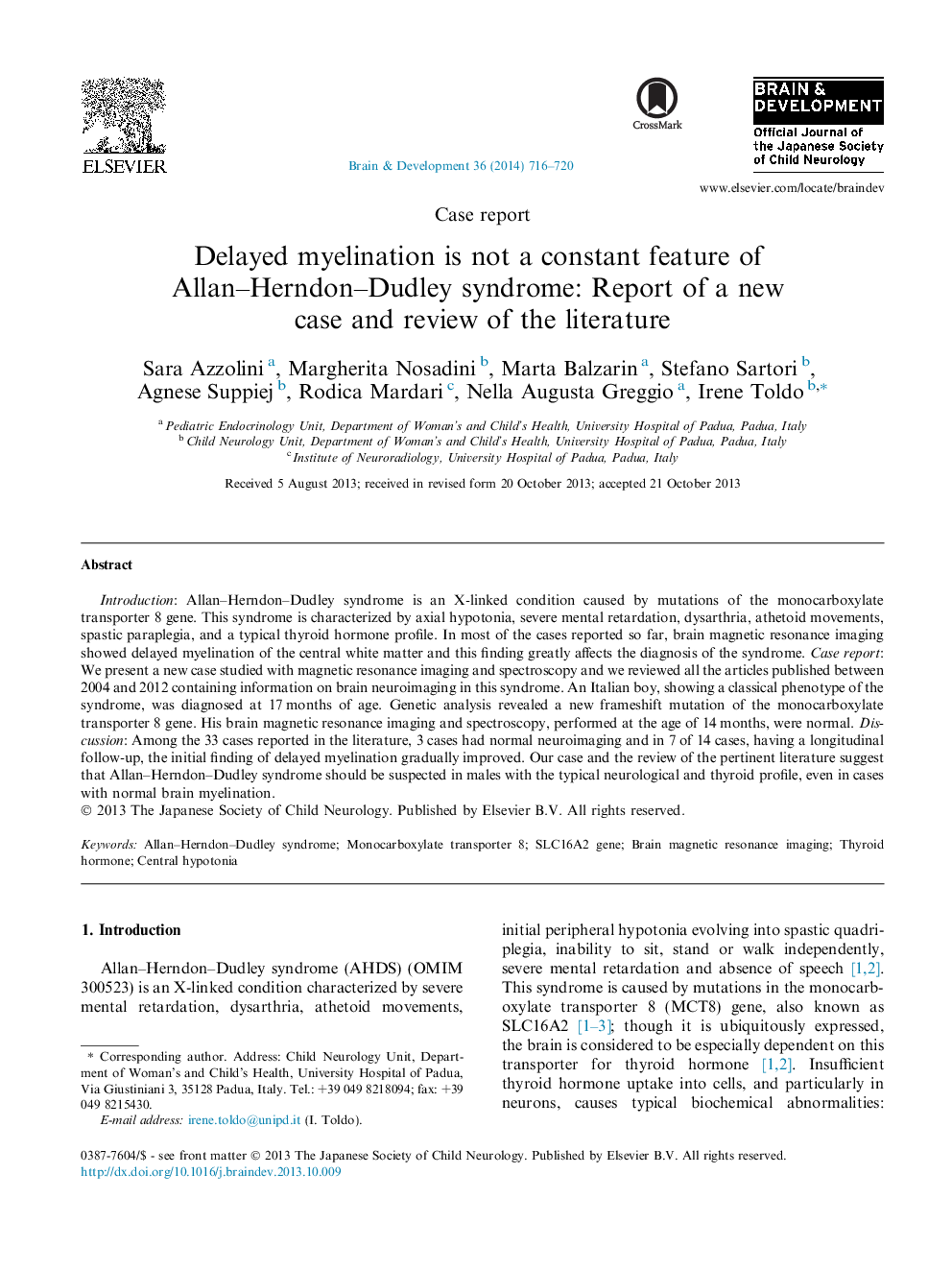| Article ID | Journal | Published Year | Pages | File Type |
|---|---|---|---|---|
| 3036918 | Brain and Development | 2014 | 5 Pages |
Introduction: Allan–Herndon–Dudley syndrome is an X-linked condition caused by mutations of the monocarboxylate transporter 8 gene. This syndrome is characterized by axial hypotonia, severe mental retardation, dysarthria, athetoid movements, spastic paraplegia, and a typical thyroid hormone profile. In most of the cases reported so far, brain magnetic resonance imaging showed delayed myelination of the central white matter and this finding greatly affects the diagnosis of the syndrome. Case report: We present a new case studied with magnetic resonance imaging and spectroscopy and we reviewed all the articles published between 2004 and 2012 containing information on brain neuroimaging in this syndrome. An Italian boy, showing a classical phenotype of the syndrome, was diagnosed at 17 months of age. Genetic analysis revealed a new frameshift mutation of the monocarboxylate transporter 8 gene. His brain magnetic resonance imaging and spectroscopy, performed at the age of 14 months, were normal. Discussion: Among the 33 cases reported in the literature, 3 cases had normal neuroimaging and in 7 of 14 cases, having a longitudinal follow-up, the initial finding of delayed myelination gradually improved. Our case and the review of the pertinent literature suggest that Allan–Herndon–Dudley syndrome should be suspected in males with the typical neurological and thyroid profile, even in cases with normal brain myelination.
